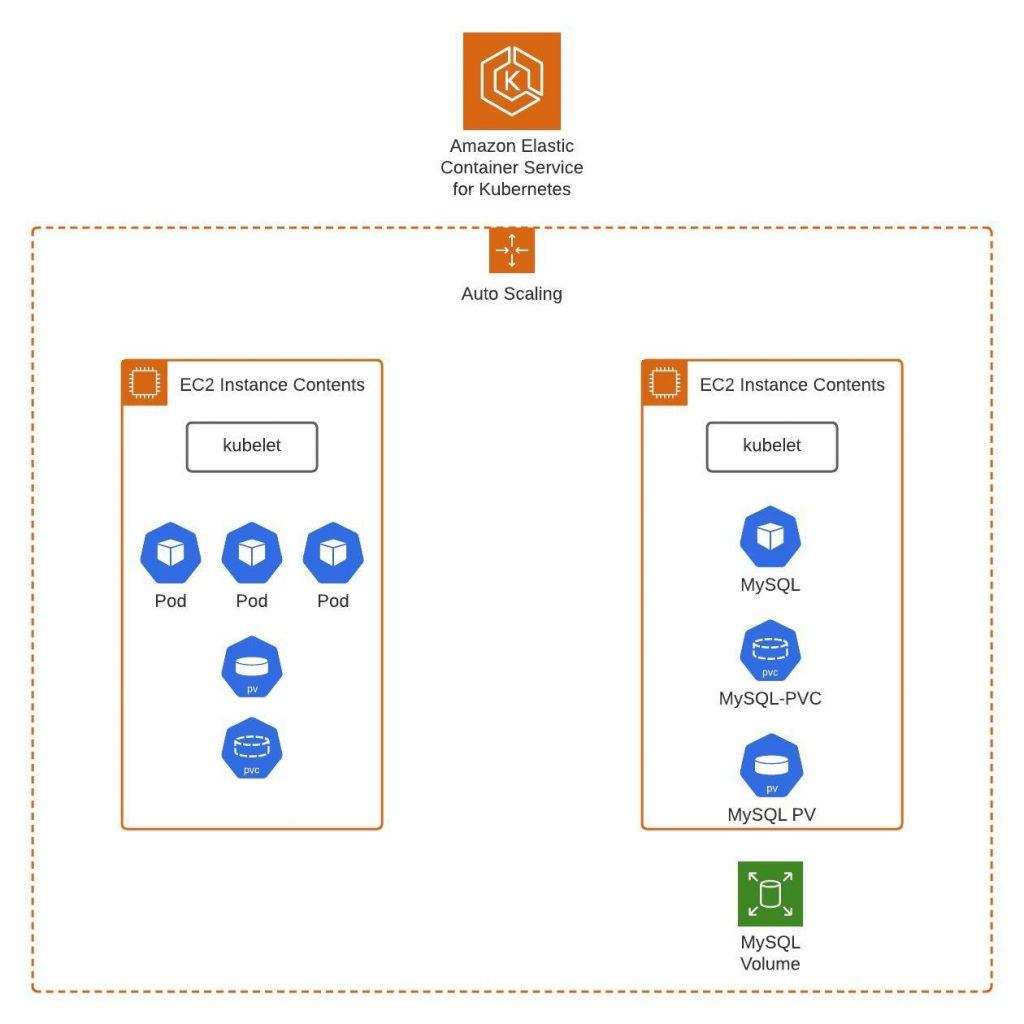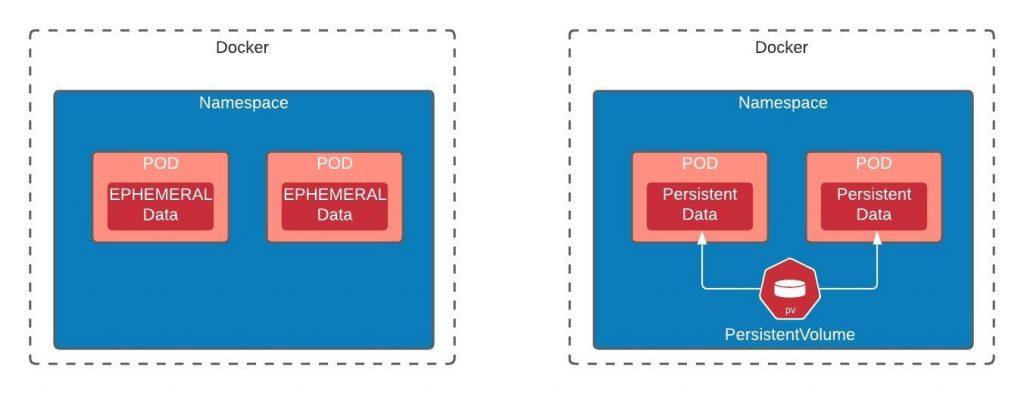How Kubernetes works
Kubernetes is based on a client-server model, it implements a layered architecture with a master server controlling several nodes ( worker nodes ) on which containers are hosted. On each node, there are a variable number of containers ( aka POD ) that run your services ( deployments or workloads )
Read more here on creating a POD with Persistent volume
Setting Up MySQL on Kubernetes with Persistent Storage
Running MySQL databases on Kubernetes offers numerous benefits, including easy scalability, portability, and efficient resource utilization. To ensure data integrity and persistence in this dynamic environment, leveraging persistent storage solutions like Amazon Elastic Block Store (EBS) volumes is crucial. Let’s dive into the process of deploying MySQL on Kubernetes while ensuring data persistence through persistent volumes.

Understanding StatefulSets and Persistent Volumes
StatefulSets play a critical role in managing stateful applications like databases in Kubernetes. They provide guarantees for ordering and uniqueness of pods, ensuring that each pod maintains a persistent identity across deployments and rescheduling. Alongside StatefulSets, persistent volumes offer independent storage resources that can outlive the lifecycle of attached pods, ensuring data durability and availability.
Persistent volumes are storage resources in Kubernetes that operate independently of attached pods. These resources can be provisioned statically at configuration or dynamically through Storage Classes. When you use persistent volumes, you create a PersistentVolumeClaim that operates like a pod. You can attach pods to this claim to allow them to use the persistent storage you created.

Configuring PersistentVolume (PV) and PersistentVolumeClaim (PVC)
In our YAML configurations, we define a PersistentVolume (PV) to represent the EBS volume where MySQL data will be stored. It’s essential to specify attributes such as access modes, capacity, and storage class to match the requirements of our workload. Additionally, creating a PersistentVolumeClaim (PVC) allows pods to dynamically request storage resources from the PV, enabling flexible and efficient allocation of storage.
YAML file ( pv.yaml ) to create PV, edit the volume ID with the EBS Volume ID which you created and the _PV_ with the unique identifier name
---
apiVersion: v1
kind: PersistentVolume
metadata:
name: _PV_
spec:
accessModes:
- ReadWriteOnce
awsElasticBlockStore:
fsType: xfs
volumeID: aws://us-east-1a/vol-xxxxxxxxx
capacity:
storage: 10Gi
persistentVolumeReclaimPolicy: Retain
storageClassName: gp2-retain
volumeMode: FilesystemYAML file ( pvc.yaml ) to create PVC, change the volumeName with the PV name you used to create using the above script, and mention the PVC name
---
apiVersion: v1
kind: PersistentVolumeClaim
metadata:
labels:
app: asvignesh
name: _PVC_
spec:
accessModes:
- ReadWriteOnce
resources:
requests:
storage: 10Gi
storageClassName: gp2-retain
volumeMode: Filesystem
volumeName: _PV_Deployment Strategy for MySQL
Our MySQL deployment YAML defines the necessary components for running MySQL in a Kubernetes cluster. By specifying environment variables like the MySQL root password and configuring volume mounts to map the persistent storage from the PVC, we ensure that MySQL data persists across pod restarts and failures. Additionally, leveraging Kubernetes Services enables seamless communication with the MySQL database through a stable network endpoint.
YAML file ( mysql.yaml ) for the deployment of MySQL, give the app name which is suitable for your deployment, and use the PVC name which you used in the earlier command
---
apiVersion: v1
kind: Service
metadata:
name: mysql
labels:
app: asvignesh
spec:
ports:
- port: 3306
targetPort: 3306
selector:
app: asvignesh
tier: mysql
clusterIP: None
---
apiVersion: apps/v1
kind: Deployment
metadata:
name: mysql
labels:
app: asvignesh
spec:
selector:
matchLabels:
app: asvignesh
tier: mysql
strategy:
type: Recreate
template:
metadata:
labels:
app: asvignesh
tier: mysql
spec:
containers:
- image: mysql:5.6
name: mysql
env:
- name: MYSQL_ROOT_PASSWORD
value: password
ports:
- containerPort: 3306
name: mysql
volumeMounts:
- name: mysql-persistent-storage
mountPath: /var/lib/mysql
volumes:
- name: mysql-persistent-storage
persistentVolumeClaim:
claimName: _PVC_To create the PV, PVC and Deployment, save the above code or get it from the GIST link mentioned below and run kubectl command
kubectl apply -f pv.yaml
kubectl apply -f pvc.yaml
kubectl apply -f mysql.yaml
Best Practices and Considerations
While deploying MySQL on Kubernetes, it’s essential to consider several best practices:
- Choose appropriate storage classes and access modes based on performance and availability requirements.
- Implement backup and disaster recovery strategies to mitigate data loss risks.
- Monitor resource utilization and performance metrics to optimize MySQL performance in a Kubernetes environment.
- Regularly update Kubernetes and MySQL versions to leverage new features and security enhancements.
Conclusion
Deploying MySQL databases on Kubernetes with persistent storage offers a robust and scalable solution for managing data-intensive workloads in modern cloud-native environments. By leveraging StatefulSets and persistent volumes, we ensure data persistence and availability, enabling reliable and efficient operation of MySQL databases in Kubernetes clusters.
Feel free to reach out if you have any questions or need further assistance in deploying MySQL on Kubernetes!
Also published on Medium.




